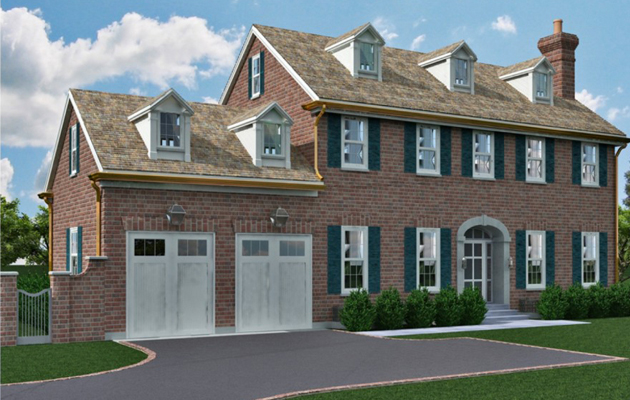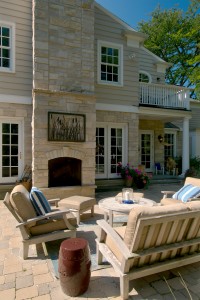
Computers can generate accurate drawings for preliminary pricing early in the process. This rendering by Hackley & Associates, Architects shows just how intricate they can be.
- Consult an Architect & Builder Early – Don’t wait until the bidding process to talk to a builder. Someone who is intimately involved in building will usually provide good cost saving ideas right off the bat.
- Don’t fool yourself– it’s always easier to say, let’s just throw this and that in as long as we’re doing the project. Those “might-as-wells” add up fast!
- Increase Efficiency, not size – It’s always more expensive to add square footage and pour a new foundation than to reorganize spaces such as a Kitchen. Get better use of spaces by replacing awkward shelves and built-ins.
- Keep the toilet and kitchen sink in the same place – It’s always tempting to move things a little, but if it can be avoided, leave well enough alone. It
costs $0 in plumbing dollars to leave locations the same, even when the fixtures are upgraded.
- Make decisions early – Go window-shop at the appliance store, the lighting store and a plumbing supply store so that you can gather a list of specific items you will incorporate, or at least think you will. This will be better than relying on a builder’s “allowance” category and save money in the long run.
- Donate stuff – don’t junk it – Invite your local Habitat for Humanity to take materials and fixtures for later resale. More than three-quarters of a house is reusable. You do something good for the landfill and get a tax credit for a good charitable cause at the same time.
- Reduce recessed cans – Architects love to throw them in, but think about it. The more can lights, the more cost now for electricians, dry-wallers and insulators, and later it’ll cost more in utility bills for both additional electric and lost conditioned air. A wall or ceiling mounted light common in all older homes can offer more wattage and better light coverage thus eliminating the amount of fixtures and electric conduit needed.
- Get a Preliminary Cost Estimate – Builders will often help in providing general costs prior to final plans have been completed. This will not only help with your budget and desires but it will keep costs down on drafting time for changes to a plan that came in too expensive.
- Don’t just go with the low bidder – If the plans are well detailed and the bidders do the same quality work all the figures should be very close indeed. If one bid is significantly lower, be careful, either you will receive less quality or they missed something which will cost you in the long run.
- Perform Investigative Work – Before assuming the ground conditions under your basement or within your walls and ceilings have a builder do some investigatory work. This will help reduce the unknowns.
